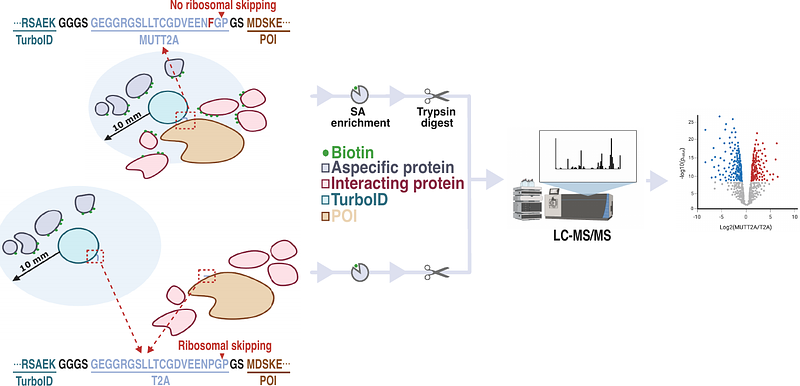Leveraging a self-cleaving peptide for tailored control in proximity labeling proteomics

Leveraging a self-cleaving peptide for tailored control in proximity labeling proteomics
Delhaye, L.; Moschonas, G. D.; Fijalkowska, D.; Verhee, A.; De Sutter, D.; Van de Steene, T.; De Meyer, M.; Van Moortel, L.; De Bosscher, K.; Eyckerman, S.
AbstractProtein-protein interactions play an important biological role in every aspect of cellular homeostasis and functioning. Proximity labeling mass spectrometry-based proteomics overcomes challenges typically associated with other methods, and has quickly become the current state-of-the-art in the field. Nevertheless, tight control of proximity labeling enzymatic activity and expression levels is crucial to accurately identify protein interactors. Here, we leverage a T2A self-cleaving peptide and a non-cleaving mutant to accommodate the protein-of-interest in the experimental and control TurboID setup. To allow easy and streamlined plasmid assembly, we built a Golden Gate modular cloning system to generate plasmids for transient expression and stable integration. To highlight our T2A Split-link design, we applied it to identify protein interactions of the glucocorticoid receptor and SARS-CoV-2 nucleocapsid and NSP7 proteins by TurboID proximity labeling. Our results demonstrate that our T2A split-link provides an opportune control that builds upon previously established control requirements in the field.